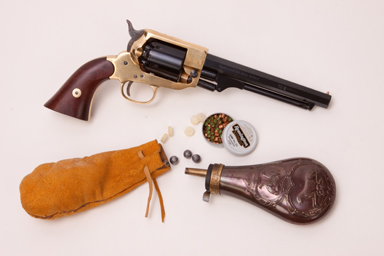I've always been interested in this pistol, but hesitant due to the brass frame. Is the 18 grn charge of 3F considered hot for this pistol? Would it last a long time using that charge, but of something like Swiss or Olde E instead?
18 grns of 3F obviously didn't fill the chamber as a wad was pushed well inside. I suppose this means the cylinder is a little bigger than a Colt Pocket model as I understand 20 grns about fills the chamber to the rim? The cylinder certainly looked smaller next to the Remington.
How does the grip size compare to the Remington?
Pietta's site states it weighs 1.1 kg vs 1.25 kg for a Remington '58, though their numbers cannot be very accurate as it says that for just about every model, .36/.44 cal and all the barrel lengths. It's obvious the Spiller & Burr is smaller than the Remington.
Watching the video it didn't seem there were cap jamming problems, although it did seem as though one spent cap was troublesome in some capacity.
Dixie Gun Works states the chambers are .367" in diameter. Is there enough meat between the chambers to ream it larger? And what is the bore size?
Is the frame proud around the loading window as the Pietta Remington is to where it would give some problems for loading conicals (and even balls to a degree)? It looks nice and open.






